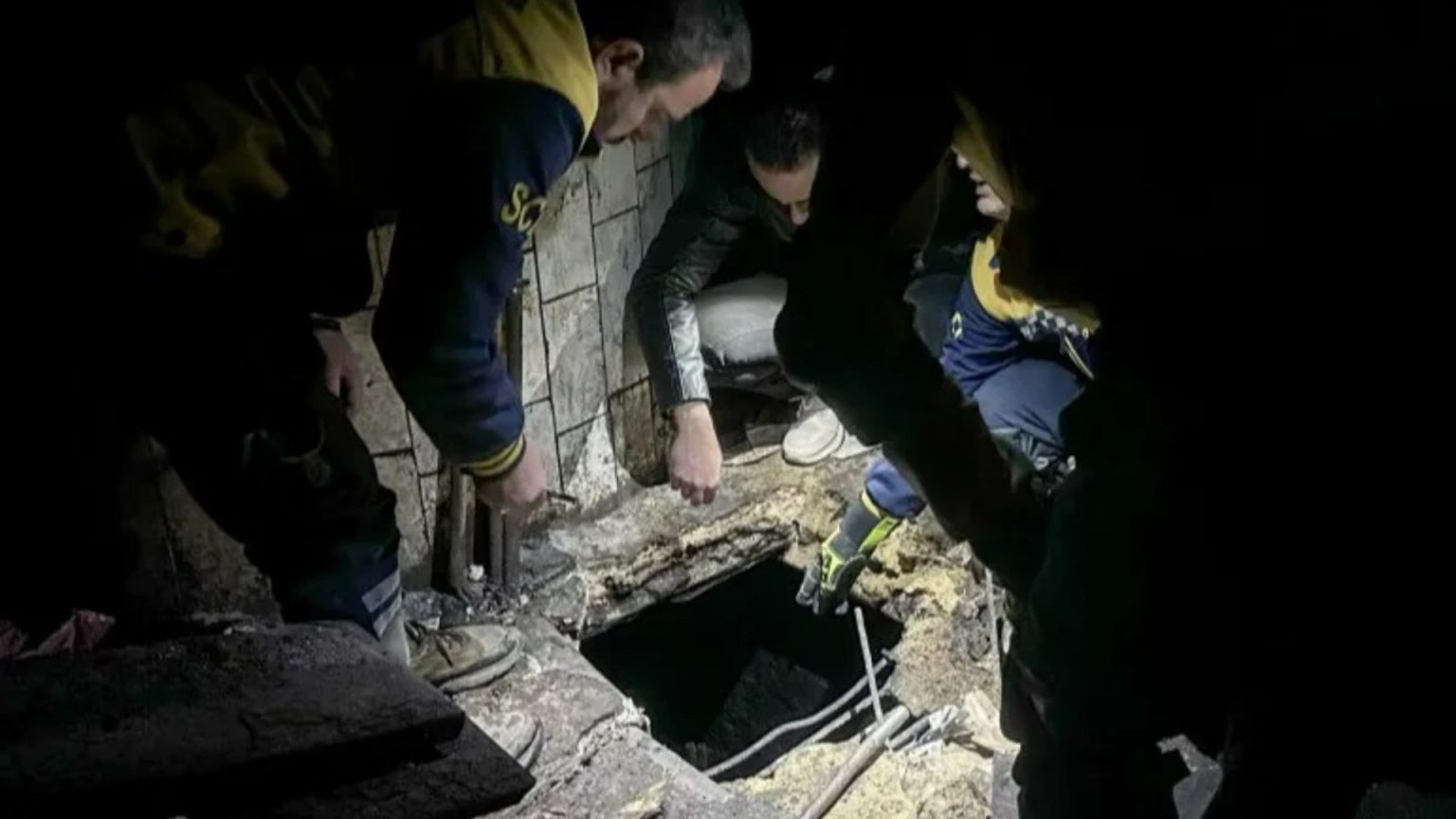The Sednaya Military Prison, a notorious symbol of the Assad regime’s brutality, has become the focus of a frantic rescue operation following the dictator’s ouster. Rebel forces, having successfully overthrown Assad and forced his flight to Moscow, prioritized liberating prisons across Syria, including the infamous Sednaya. Upon entering the prison, they discovered a chilling reality: numerous prisoners remained trapped in secret underground cells, their existence previously unknown. Footage from the scene depicts rebels desperately attempting to break through concrete floors and walls, searching for hidden entrances to these subterranean bunkers. The Damascus Countryside Governorate reported that CCTV footage showed over 100,000 detainees still within the prison complex, highlighting the scale of the humanitarian crisis unfolding.
The dire situation underground has prompted an urgent response from various groups, including the White Helmets, a Syrian civil defense organization. Emergency teams specializing in search and rescue have been deployed to the prison, equipped with tools to penetrate the reinforced concrete structures. The White Helmets also issued a public plea for information, offering a $3,000 reward for any leads that could help locate the trapped prisoners. The urgency of the situation stems from fears that the prisoners in the underground cells, lacking proper ventilation, are facing imminent asphyxiation. The electronic locking mechanisms on the doors further complicate rescue efforts, requiring passcodes that remain unknown.
The discovery of the hidden cells adds another layer of horror to Sednaya’s already grim reputation. Human rights groups have long documented the prison’s role as a “human slaughterhouse,” where torture, abuse, and extrajudicial executions were commonplace. The Association of Detainees and The Missing in Sednaya Prison (ADMSP) estimates that tens of thousands of prisoners perished between 2011 and 2021, either through execution or due to the appalling conditions within the prison, including starvation and torture. The Syrian government consistently denied these accusations. Now, with the prison under rebel control, the full extent of the atrocities committed is beginning to emerge.
Freed prisoners recount harrowing experiences of overcrowding, constant surveillance, and dehumanizing treatment. Many were deprived of their names, reduced to numbers, their identities stripped away. They describe being crammed into overcrowded dormitories, forced to keep their heads down, unaware even of their fellow inmates’ names. Years spent without seeing sunlight, enduring physical and psychological torture, and facing the constant threat of execution have left deep scars. The liberation represents a new beginning, a chance to reclaim their lives and identities.
The liberation of Sednaya Prison and the frantic search for trapped prisoners coincide with the dramatic collapse of the Assad regime. Rebel forces swiftly and decisively seized control of Damascus, forcing Assad to flee. His acceptance of asylum in Moscow marks the definitive end of his family’s decades-long rule. The fall of the regime has sparked jubilant celebrations across Syria, with citizens taking to the streets, toppling statues of Assad and his father, Hafez, and expressing hope for a democratic future. However, the transition poses significant challenges, including the potential for instability and the need to establish a new government.
Amidst the celebrations and the hope for a new era, the grim reality of Assad’s legacy lingers. The shattered infrastructure, fractured society, and countless lives lost bear testament to the brutality of his rule. The discovery of the hidden cells at Sednaya serves as a stark reminder of the atrocities committed under his regime and underscores the urgent need for accountability and justice. As Syria navigates its post-Assad future, the horrors of Sednaya will remain a potent symbol of the human cost of tyranny. The ongoing rescue efforts not only represent a race against time to save lives but also a critical step towards uncovering the full truth about the regime’s crimes and ensuring that such atrocities are never repeated.




